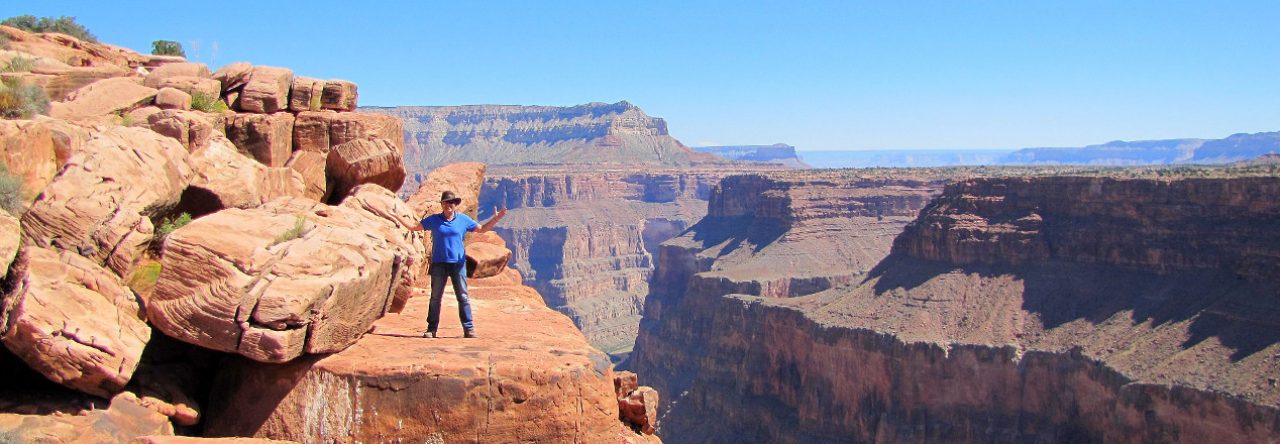I had a pleasure to ferry N1501C, a gorgeous Cirrus SR22 from Hayward, California to Rifle, Colorado. The airplane was flying to a new owner and I am sure that the seller had to regret seeing the airplane leaving. He clearly put much love into what started as a G1 Cirrus, but ended with a new engine, a FAT Supercharger, MT 4-blade composite prop, Avidyne R9 avionics, LoPresti LED lights, LoPresti wheel pants, Aerox built-in oxygen and new interior.
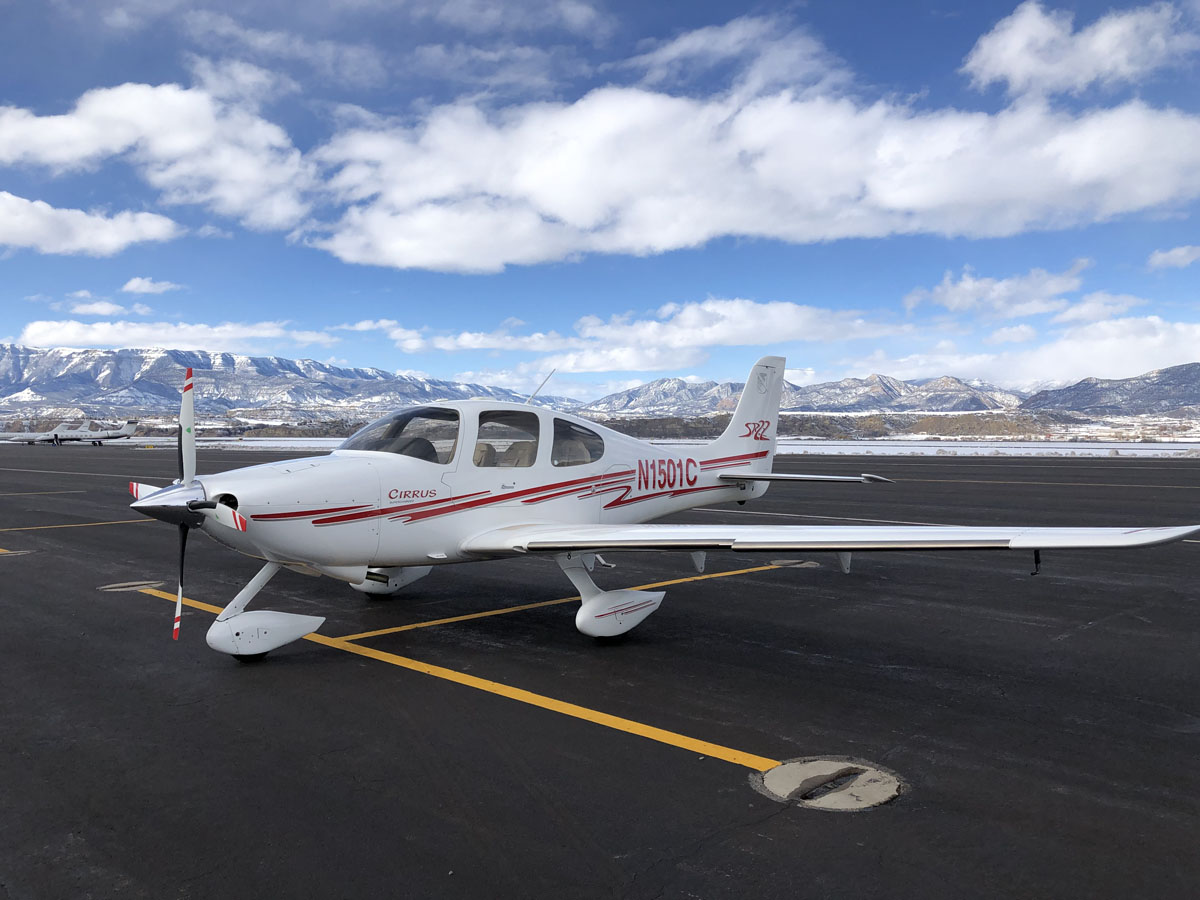
The original plan was to leave Wednesday morning and return the same day with United. I had a busy week and Wednesday was the only day free. Flying over mountains in the West in winter really requires turbines, if the weather doesn’t cooperate. I know some people fly in SR22T FIKI in IMC over Sierras and I did it also once in a normally aspirated clean wing SR22. It is sufficient to say that I won’t do it again.
Weather for Wednesday looked dicey, barely possible. Winter storms were coming over the destination, with low visibility in snow. I thought that I might find a window. On the left is a forecast from Monday 9 pm (for a Wednesday flight) and on the right, the forecast from 10 pm.
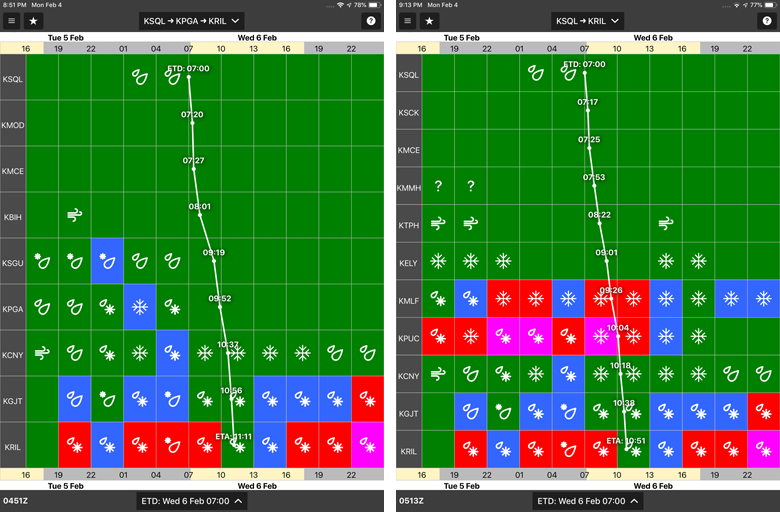
In case you wonder, these are screenshots from WeatherSpork, really cool, same say the best general aviation weather app. Perhaps apart the name.
On Tuesday afternoon that little green square at KRIL closed also and I got a text message from United advising me of winter storms in Colorado and recommending a no-fee rebooking for a different day. Simultaneously, my Thursday afternoon flight got cancelled and my morning flight became a student solo flight (different recommending instructor). Suddenly, my Thursday was free! I know a hand of providence (god, fate, or whatever is your fancy) when I see it, so I promptly changed my United tickets to Thursday, called the buyer to let him know about one day delay and proceeded to thoroughly enjoy a do-nothing Wednesday.
On Thursday morning weather forecast was for clear sky all the way to the destination and I left home early planning for an early departure. Arriving to the airport at 7 am I found N1501C where I left her, but with frost on the wing. What, frost, in California, Bay Area? After couple of minutes staring at that interesting phenomenon in disbelief, I recalled that I had a scrapper in my own hangar. Scrapper worked fine and in fact didn’t leave a trace on the wing, but it was hard work. By the time I was done, it was close to 8 am.
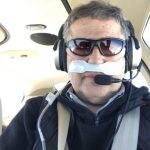
After uneventful departure and climb to 15,500 (that airplane was climbing in a hurry), I put on oxygen. I have on-demand system in my airplane with small cannulas, but this was standard, continuous flow system, so I could enjoy a lovely mustache.
Crossing over Sierra I was rewarded with magnificent views of the snow over the mountains.
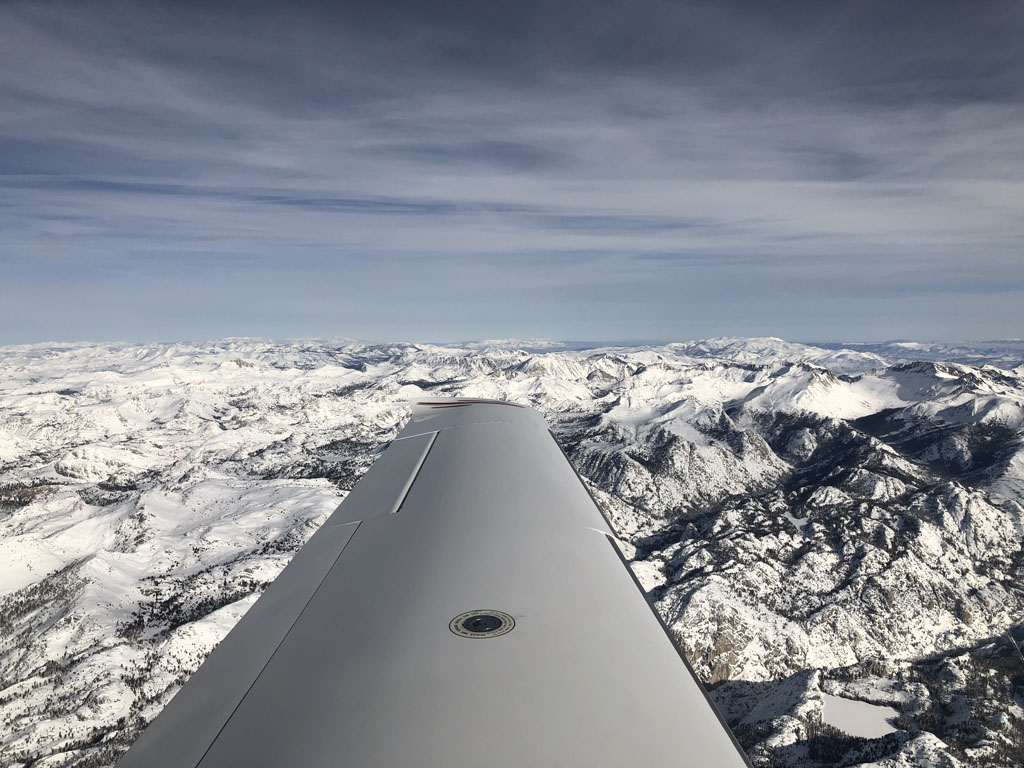
and Mono Lake covered in thin mist of clouds.

I was hoping to make it non-stop to Rifle, 700 nm trip, with light tailwinds and started playing with Avidyne R9 to explore all that it can offer. Avidyne was the first company that Cirrus chose to offer “glass” cockpit for early SR22. Well, technically that is not true, the very first MFDs were from Arnav, but that is already prehistory. Our Cirrus, N823FW has Avidyne PFD and MFD, so called version 8. Version 9 (hence R9) was designed as revolutionary upgrade and indeed it was at the time.
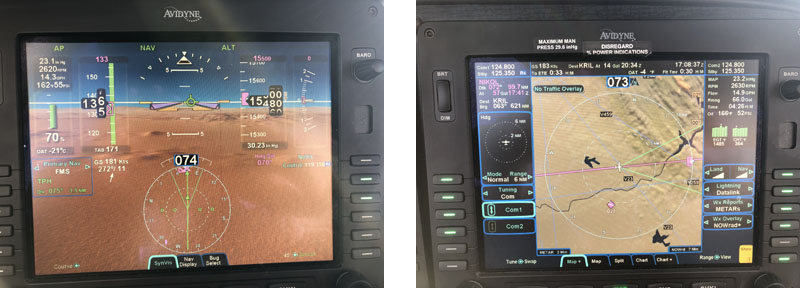
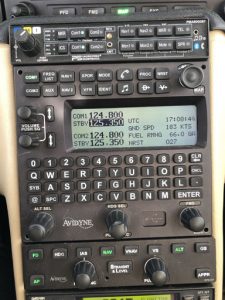 With synthetic vision, well thought layout, MFD with traffic and weather, digital autopilot (DFC100) and a keyboard to enter waypoint and frequencies instead of twisting knobs as on than contemporary GNS430, it was very much ahead of time.
With synthetic vision, well thought layout, MFD with traffic and weather, digital autopilot (DFC100) and a keyboard to enter waypoint and frequencies instead of twisting knobs as on than contemporary GNS430, it was very much ahead of time.
Unfortunately, development took very long time (Avidyne perennial weakness), politics and business got involved and Cirrus selected Garmin as the supplier for the next generation avionics, the Perspective. Avidyne offered R9 as a (extremely expensive) upgrade and few owners did upgrade.
For little fun, notice that the keyboard on R9 is Qwerty. Garmin either decided to do different or had a brain fart and designed alphabetical keyboard. After all instructors finally got used to that contortion, they finally fixed that mistake with Qwerty keyboard in Perspective+.
All that reminiscence and knob turning took some time, so when I finally decided to check the weather at the destination, I was in for a little choc when looking at my iPad, which was connected to Stratus ADSB receiver.
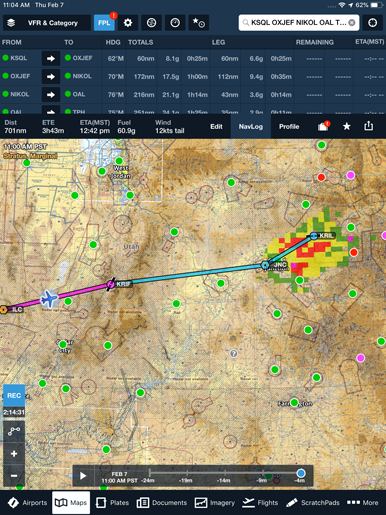
Yes, these red blobs, that’s my destination. Clear everywhere, except where I needed it. Visibility 3/4 mile is snow, ceiling, well, with that visibility it hardly mattered. I was still an hour away, so I decided to continue, while evaluating plans B and C.
Plan B would be an instrument approach into Rifle. If that visibility improved, I could fly RNAV Y runway 26. I could see well in front of me, so I knew that the it would be relatively shallow layer of IMC with not much time in it. And the visibility could very well improve, it came fast, it could go away fast, weather in the mountains changes rapidly. However, I would only have 15 gallons of fuel when arriving over Rifle and I still had to fly out before making a procedure turn back to catch the glide path. Notwithstanding the fact that I could very well have to go missed. Far, far too little fuel for these kind of games.
Time for plan C, which was to land in Grand Junction, refuel and call the buyer to ask how it looks in Rifle. Nothing like a pair of eyes, pilot eyes, to evaluate the situation. To keep my options open, I switched on TKS to see how well it worked, waited for couple of minutes and didn’t see a trace of glycol neither on the wings nor on the windshield. That instrument approach into Rifle suddenly became much less appealing.
Just as I was about to congratulate myself for my planning skills, the airplane pitched to the right and a message “SERVO LIMIT” popped up. I disconnected the autopilot and tried to trim the airplane, but she stubbornly decided to keep rolling to the right. Hand flying out of trim airplane for an instrument approach in the mountains with only superficial familiarity with avionics and no anti-ice? Plan B was promptly pushed out of the alphabet and plan D became to overnight in Grand Junction.
Fighting the trim didn’t leave much time to keep checking weather in Rifle, but when I was landing, the road leading to Rifle looked passable. You know, different kind of IFR “I follow the Roads”. After landing and taxing to the fuel pump, I opened the door and … ouch! It was -12 degrees C outside. I refueled as quickly as I could, jumped back into the airplane and checked the weather in Rifle again. This time, I was in for a good surprise. Visibility 10 miles, ceiling 4,000 and all these red and yellow gone. Little bit of green, but not much. What mountain gives, mountain takes, or something to that effect.
Departing VFR, short hop to Rifle, delivered the airplane to the new owner, who graciously drove me back to Grand Junction, for a United flight back home. I landed at SFO at 9 pm.
